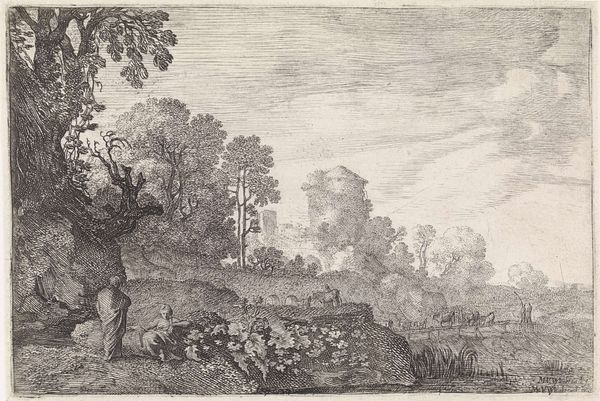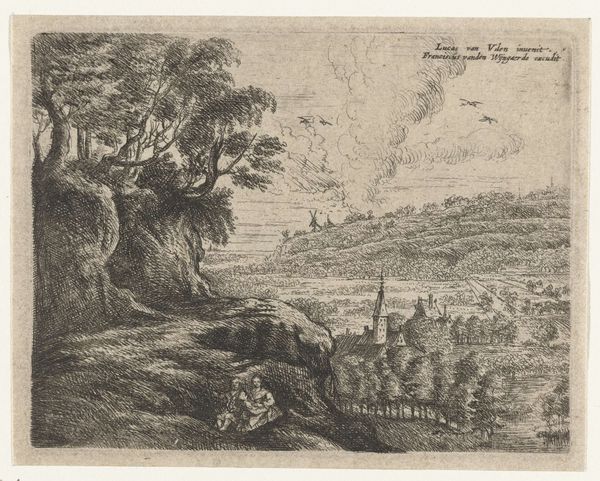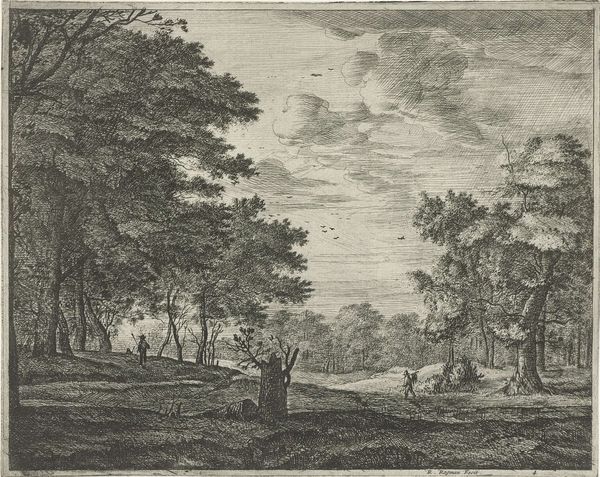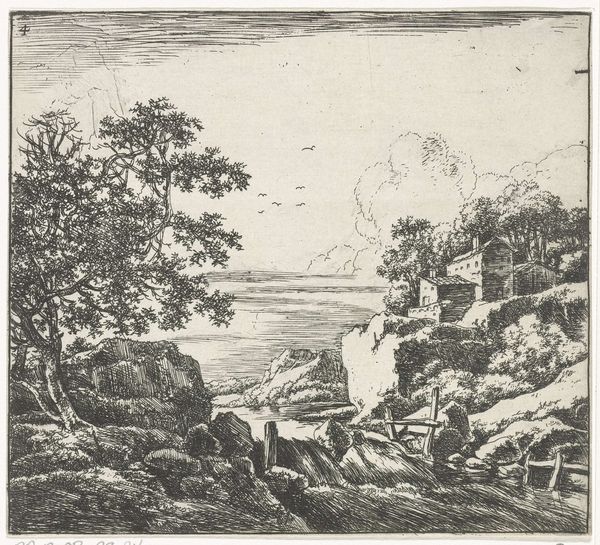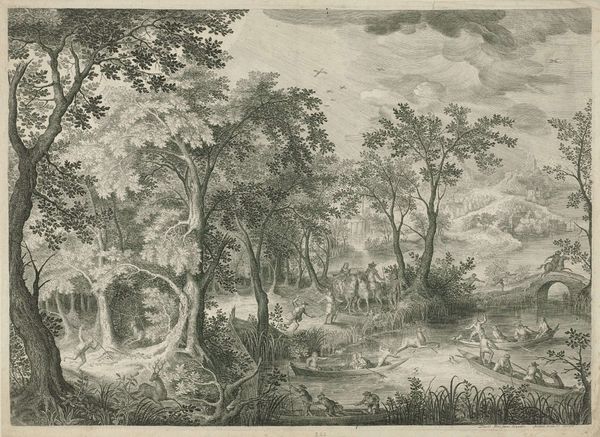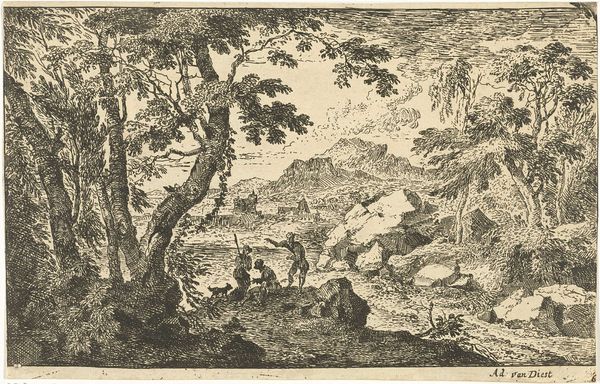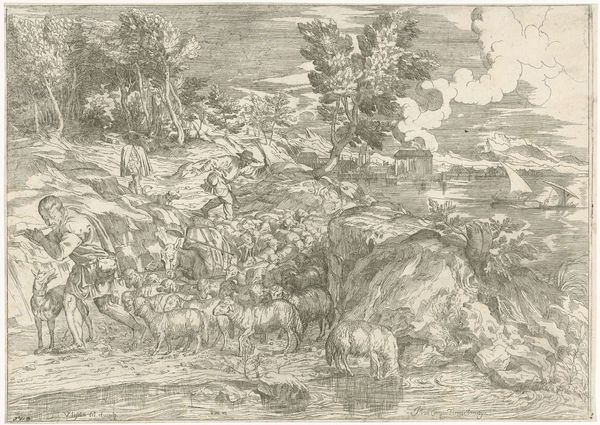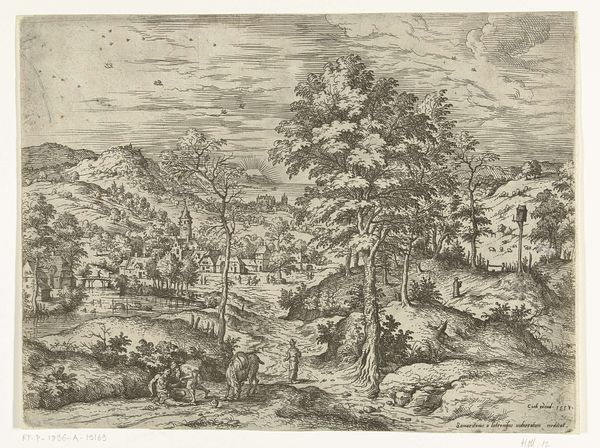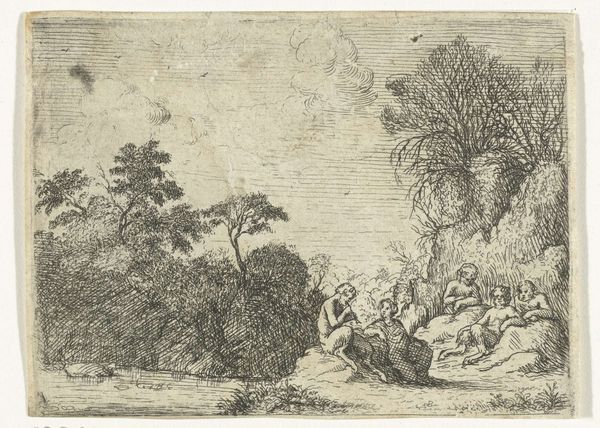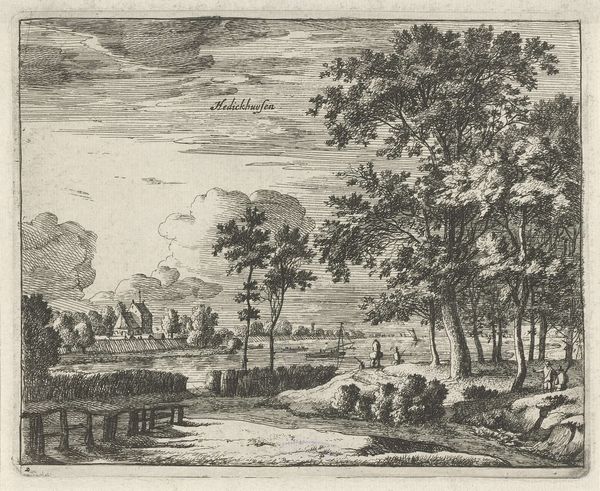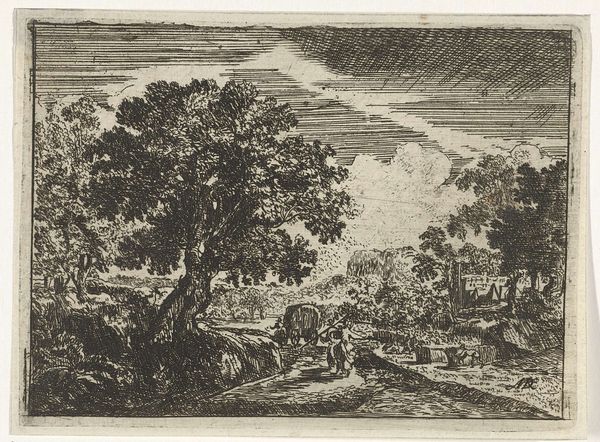
print, etching
#
baroque
#
dutch-golden-age
# print
#
pen sketch
#
etching
#
landscape
#
etching
Dimensions: height 126 mm, width 187 mm
Copyright: Rijks Museum: Open Domain
Curator: Moyses van Wtenbrouck created this etching, "Landschap met een kudde op een brug," sometime between 1600 and 1647, during the Dutch Golden Age. It exemplifies the period's fascination with landscape and the natural world. Editor: It's so delicate! The intricacy of the lines is astonishing. It has an almost dreamlike quality. I'm immediately drawn to the texture of the trees and how they frame the composition. Curator: Indeed, the use of etching allows for a remarkable level of detail. We can explore this work within the context of the burgeoning Dutch Republic and the cultural shifts of the era. Think about the rise of landscape painting as a reflection of national identity. Editor: Absolutely. And I’m also intrigued by the social element here; look at how Wtenbrouck captures the texture of everyday rural life. The presence of livestock suggests an engagement with the labor of the countryside and the significance of land ownership. We have an implicit commentary on what makes this landscape productive. Curator: Precisely! It's an intersectional look, considering themes of pastoralism, the emergence of mercantile capitalism, and, dare I say, early ecological awareness through the rendering of light and shadow. Note also the human figures tucked away to the side. They look like they’re caught in quiet observation, echoing themes of stewardship of the natural world. Editor: Speaking of craft, this etching underscores the accessibility of printed images as part of a growing market for art. These are artworks intended to circulate. How fascinating to think about this image multiplied across households and their impact on consumption. Curator: That adds a critical lens to our viewing experience, considering mass production, availability, and art. The Baroque aesthetic lends to the interplay of light, suggesting perhaps nature’s own ability to inspire awe. The choice to cast much of the land in light reinforces the power dynamic embedded within. Editor: Analyzing the marks and labour needed to render it can help us unpack a number of details regarding production and distribution. Thanks for emphasizing that point, as it might be easy to skim past it when reflecting on beauty. Curator: Thank you. Reflecting upon this scene alongside current socioeconomic discussions encourages renewed exploration around environmental conservation efforts, reminding viewers to analyze our participation in sustainable approaches today. Editor: Ultimately, it shows us that images carry labour—and that it can create value, and at what cost? That question might linger, encouraging visitors to keep coming back.
Comments
No comments
Be the first to comment and join the conversation on the ultimate creative platform.
